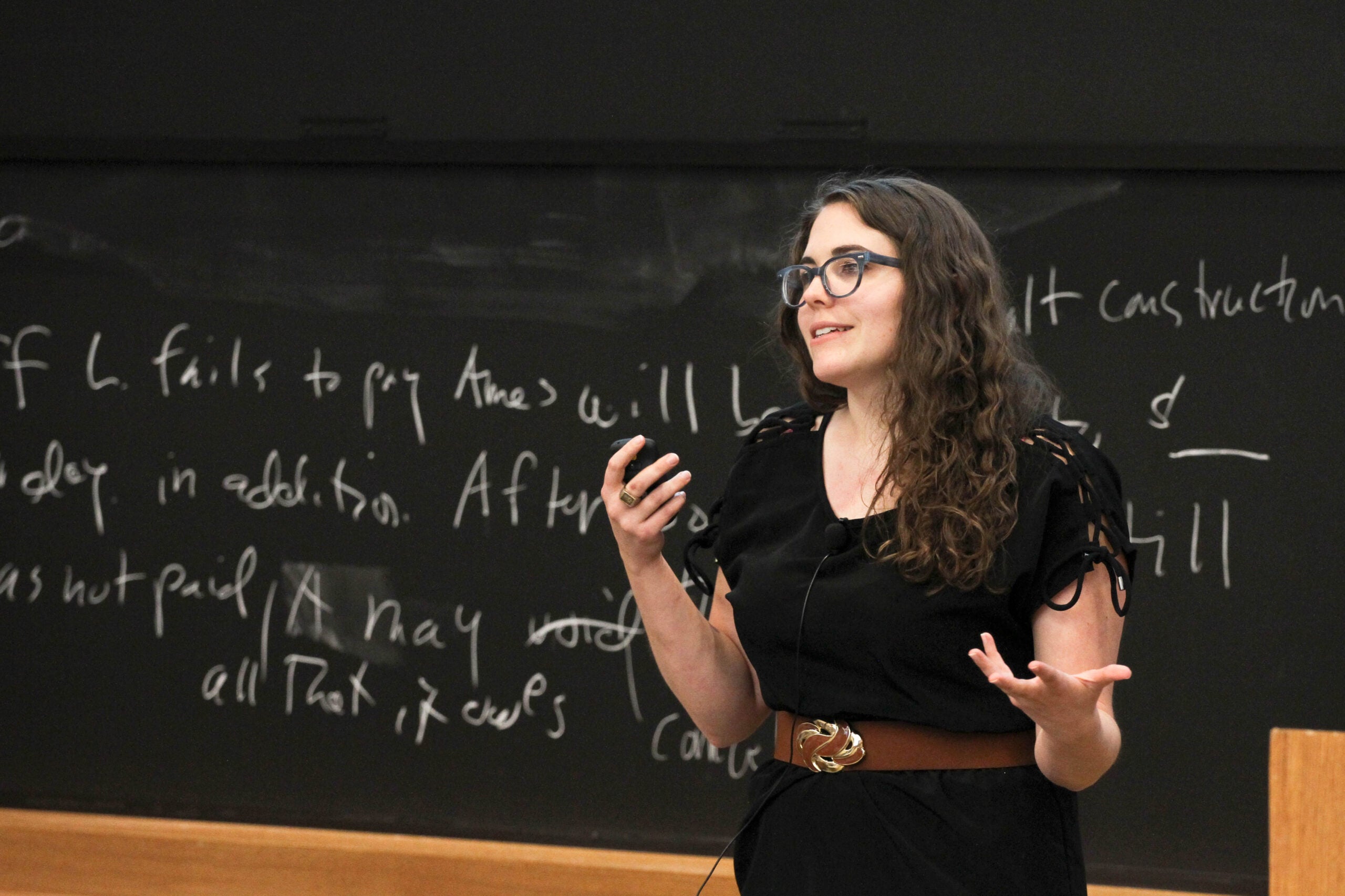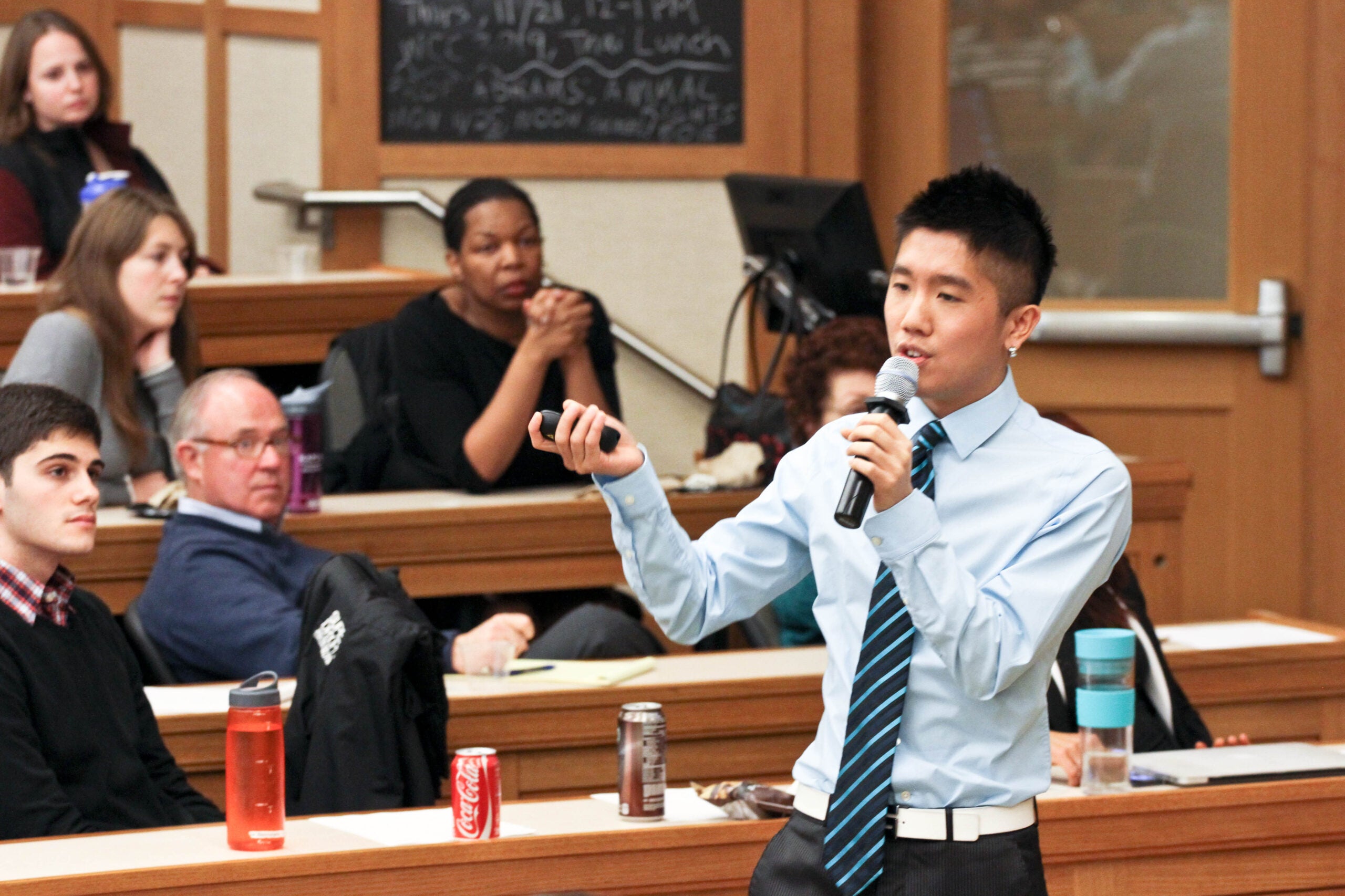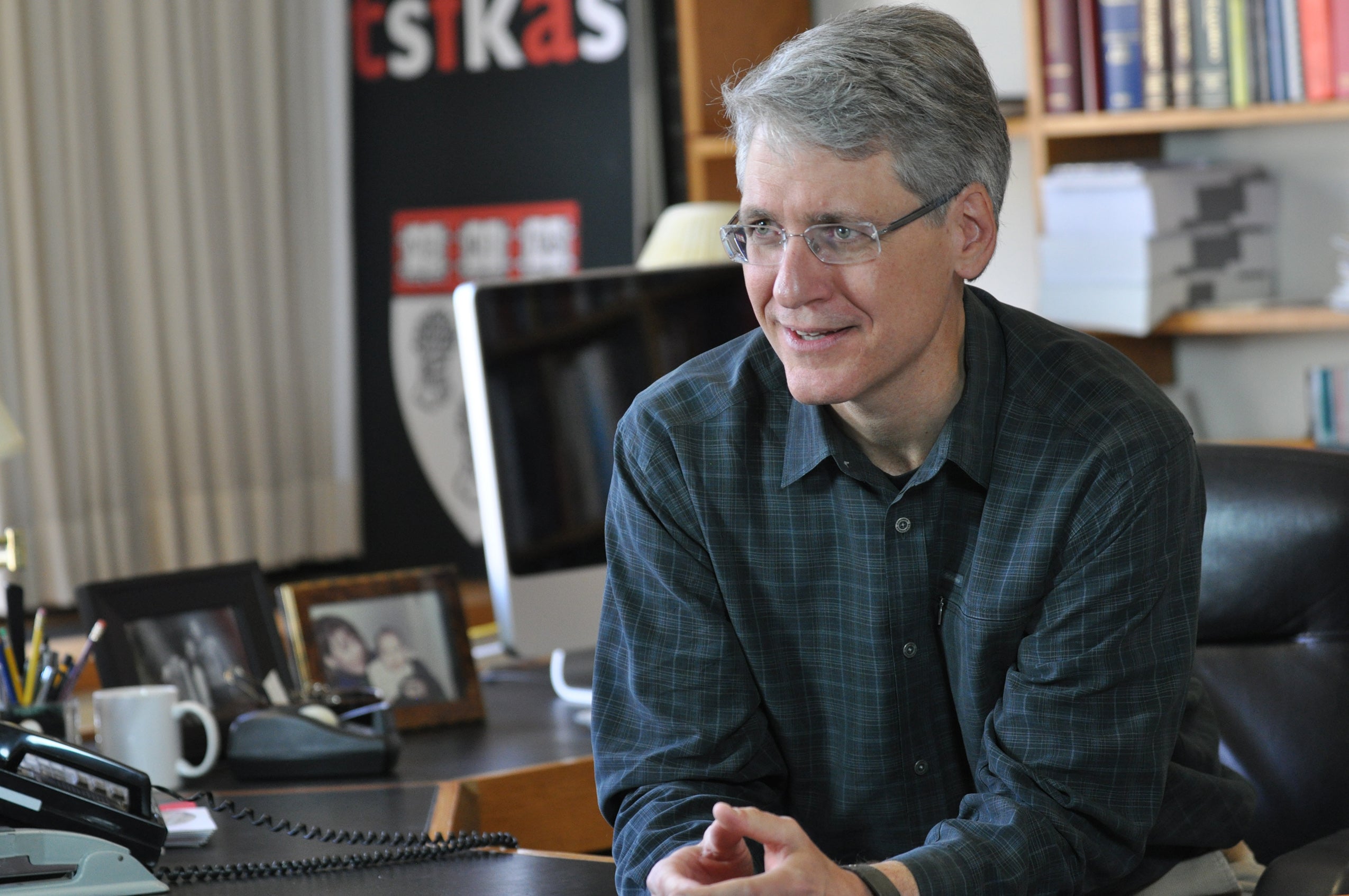Harvard Law School Professor Jon Hanson believes that the traditional casebook method employed in many law courses and classrooms has its limitations. As he wrote in a 2008 law review article, “the casebook method forces the round complexities of law, lawmaking, and human behavior into the square holes of antiquated legal categories and idiosyncratic appellate decisions.”
Last year, Professor Hanson, who is also the director of the Project on Law and Mind Sciences, came up with an alternative when he devised a project he called “Frontier Torts,” in which students in his first-year torts class explored several developing areas of tort law in a much more interactive fashion than the casebook method would allow. (See course website.)
The response was so positive that he offered it again this past fall semester. Again, his students expressed enthusiasm, and “Frontier Torts” now appears to be a fixture in Hanson’s first-year torts curriculum. (Read “A refreshing approach to the 1L curriculum,” by Sara Murphy ’16, Jessica Ranucci ’16 and Sean Cuddihy ’16, published in the Jan. 31, 2014 edition of the Harvard Law Record.)
“It’s part of a larger pedagogical goal that I have,” Hanson explains. “My ambition is not to teach legal decisions and doctrines as they now exist but to identify the forces that move and shape the law.”
The purpose, he says, is to encourage students to think “outside the legal box” in order to better comprehend the limits of law and the role it really plays—and may play—in dealing with social problems.
At the start of each of the last two fall semesters, he and several teaching fellows developed a list of 15 viable topics that were presented to the students, who were asked to narrow them down to five and then to three. Then the class was divided into three teams of about 27 students each to study the selected topics, collectively write a white paper to be published on a website, and present their findings to their peers along with supporting commentary from practicing lawyers and other professionals who were invited to participate.
The topics chosen this year were predatory lending practices, gambling casinos’ duty of care to compulsive gamblers, and urban gun violence. On three consecutive days in late November in Wasserstein Room 2012 those teams gave their presentations.
On the afternoon of Nov. 21, the Inner City Gun Violence team took its turn. The program that day was divided into two segments. In the first, attorneys and other professionals working on the issue spoke to the students. They included Jonathan E. Lowy, director of the Legal Action Project at the Brady Center to Prevent Gun Violence, who provided an overview of the state of gun litigation in the U.S., and the difficulties plaintiffs encounter in bringing actions against a gun industry that enjoys immunity from the 2005 Protection of Lawful Arms in Commerce Act as well as generally weak gun laws.

After a break, it was the students’ turn, and six of the team members spoke to their peers about their research and conclusions.
Alexander Self, who provided some historical context on the growth of gun violence in the inner cities, concluded his presentation on a dispiriting note.
“Gun violence is an epidemic in America and in American cities,” he said, “and with organizations like the NRA and the gun-rights movement continually thwarting attempts to deal with the situation, unfortunately it looks like there is no end in sight to the problem in the foreseeable future.”
Andres Salinas focused his presentation on tort law as a potential remedy and also drew a less than optimistic conclusion: “Manufacturers are only susceptible to liability in really limited scenarios right now. And even within those scenarios it’s really difficult to prove they should be liable.”
Nevertheless, the Inner City Gun Violence team contends that tort law stands as the best alternative for ultimately reducing the levels of gun injury and violence in the U.S.
“Gun violence is far too expensive for America’s urban communities, and tort liability can help shift those costs to the ones who can most efficiently reduce them—gun manufacturers,” the team’s paper concluded. “It is time to stop shielding gun manufacturers from the cost of the thousands of deaths and injuries caused each year by their reckless conduct and force them to take responsibility for the violence carried out with their products.”

Challenging students to come up with this kind of opinion is not often done in law schools, Hanson points out. But he believes that it’s important and should be done more frequently.
“I’m not necessarily trying to make this a fascinating week, though I think it’s that. My goal is actually to encourage students to change the way they think about law and themselves in relation to law. That’s not an effect they’re always going to perceive at the time. Rather, it’s the sort of impact that, I hope, many of them may look back and see later.”
This year, students saw that the project resulted in a quick potential impact beyond the walls of academia when Hanson received an email from Alabama Deputy Solicitor General Andrew Brasher ’06, asking to see the student white paper on gambling casinos. He told Hanson he’d heard about the presentation and paper and was interested because Alabama is interested in suing an Indian casino on a public-nuisance theory and was gathering relevant information.
At semester’s end, Hanson said he’s heard nothing but positive responses from students, and comments from some of them would seem to bear that out.
“It is a reminder to many of us why we came to law school and how we can use our advantaged positions to greater benefit society,” said Lakeisha Williams.
“To me, the primary value of Frontier Torts was the opportunity it provided to apply the legal doctrine and theory that consume the first year of law school to a real-world problem,” said Susan Pelletier. “More specifically, the project forces us to almost immediately begin to challenge the boundaries of the law, just as we start to understand them. It’s an extremely valuable perspective that will influence the way I approach other classes in law school and hopefully will impact my career in the law as well.”
